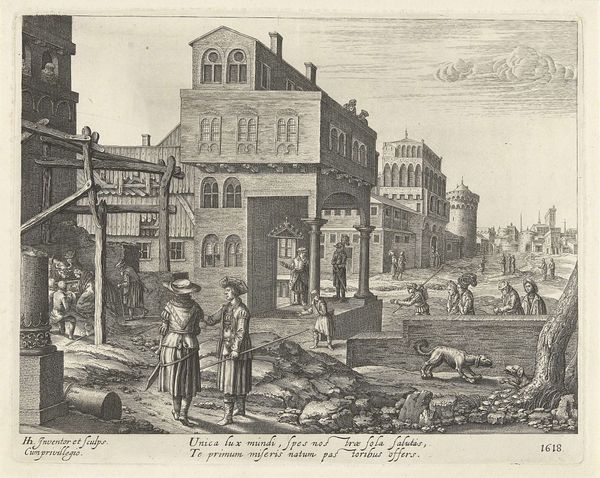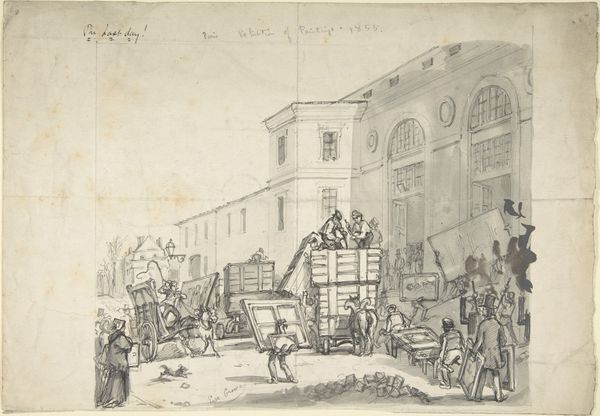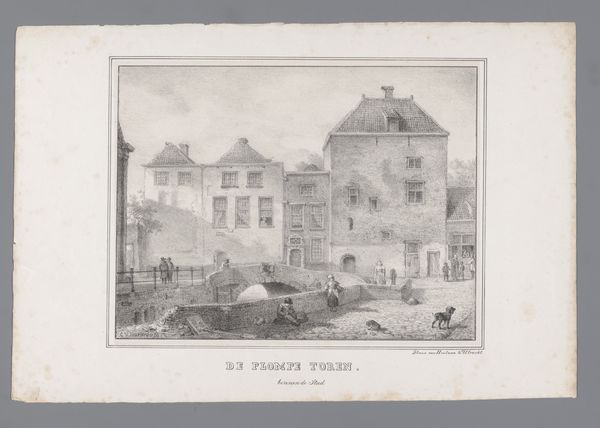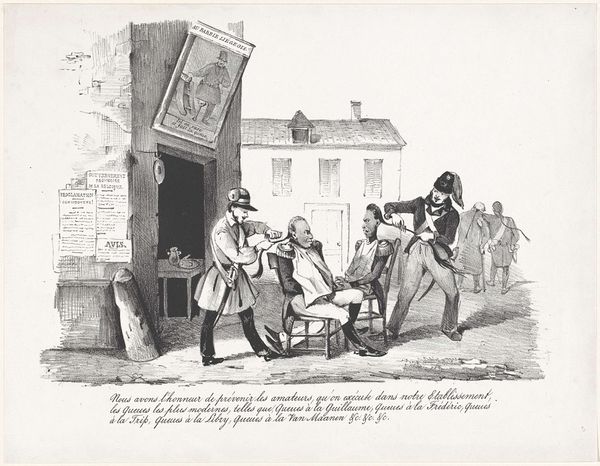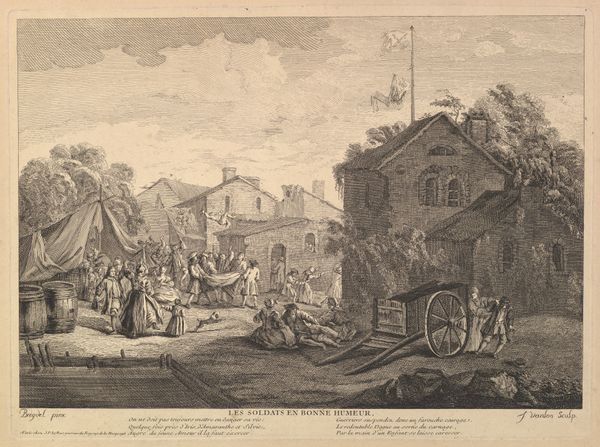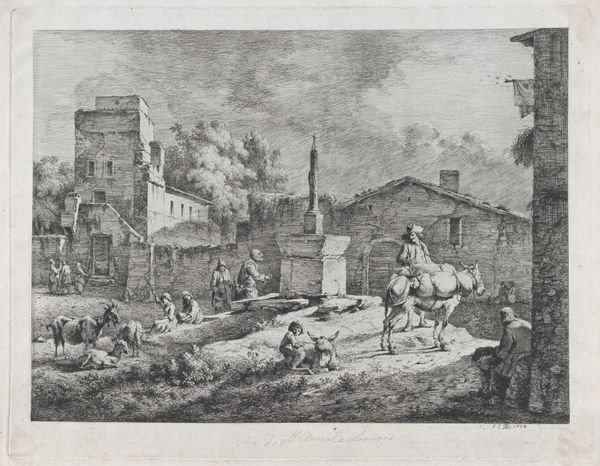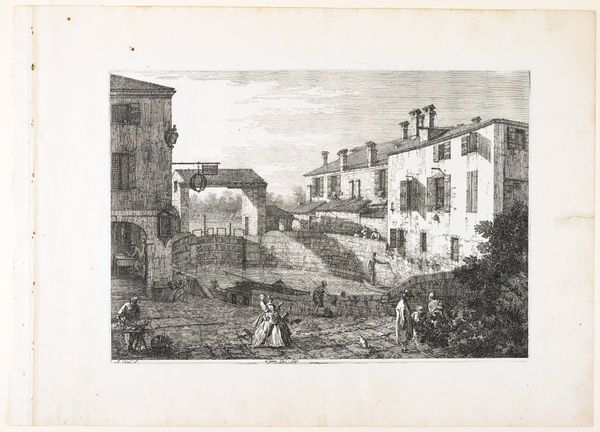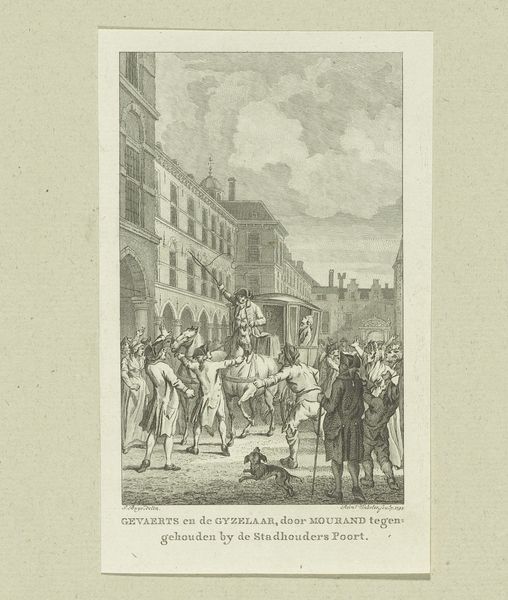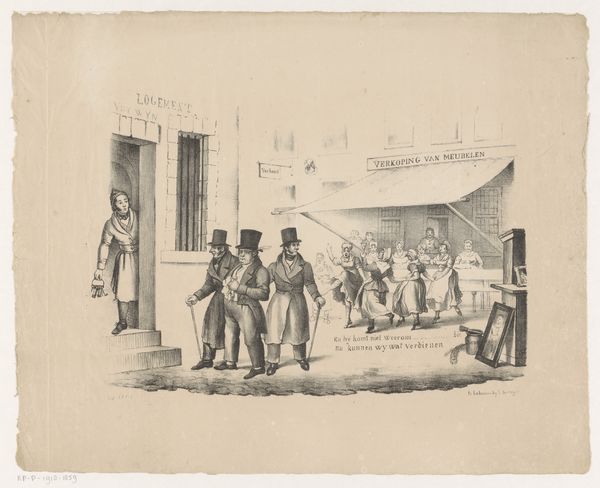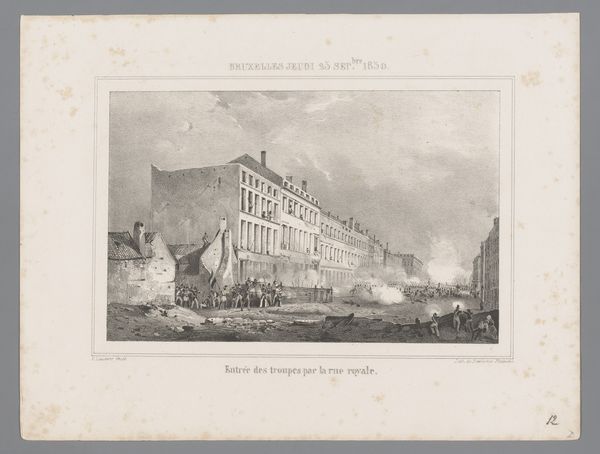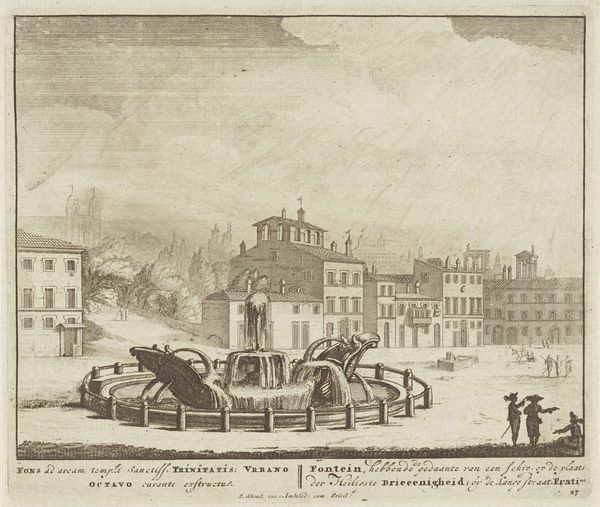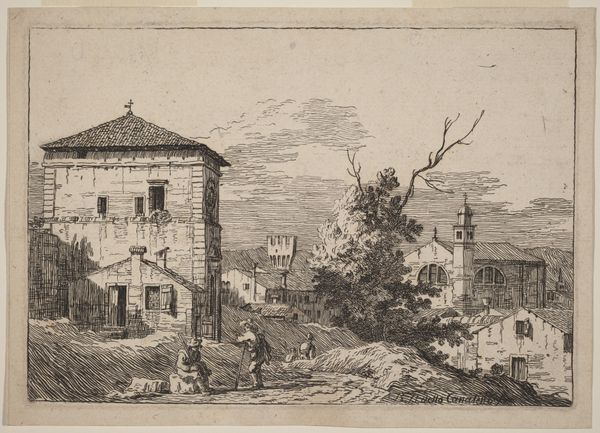
drawing, lithograph, print, graphite
#
drawing
#
narrative-art
#
lithograph
# print
#
caricature
#
graphite
#
cityscape
#
history-painting
#
academic-art
Dimensions: sheet: 10 9/16 x 14 1/2 in. (26.9 x 36.8 cm)
Copyright: Public Domain
Curator: Oh my, what a delightful flurry of visual metaphors! It reminds me of a rather busy dream after too much cheese. Editor: That’s an apt description, actually. What we're looking at is entitled "Caricature of a Bank of Maryland Crisis," likely made between 1829 and 1839. It's a lithograph and graphite drawing by someone only known by the moniker "Crayon." Curator: "Crayon" conjures up a kind of everyman artist, a child of the times perhaps, using accessible means to speak to… what is going on exactly? Utter chaos! Editor: Indeed! This artwork pulls no punches in illustrating the panic following the collapse of the Bank of Maryland. Note the various figures scrambling, carrying what one assumes are their savings… Curator: ...towards another dubious-looking institution, "Saving Institution," where a gentleman seems to be thoroughly enjoying the financial wreckage from a safe distance. A truly wonderful tableau of economic turmoil, isn't it? The devil-esque figure soaring overhead, declaring, "I AM THE ARCHITECT OF THEIR TORTUNE" makes it pretty on the nose! Editor: The image certainly employs a robust set of symbols. The winged demon overseeing the unfolding chaos speaks directly to the sense of misfortune, even divine punishment, that likely permeated the atmosphere after such a significant bank failure. Notice also the monkeys scampering across the buildings, often used in caricatures to represent imitation or mockery, in this context highlighting the absurdity of the situation and human actions, a further accentuation of instability. Curator: So, the artist, using the symbolic language of monkeys and winged tormentors, invites us to both mourn and maybe…giggle? Is it okay to giggle at other people's misfortune from two centuries ago? Editor: I think "Crayon" intended a cathartic response, maybe a sense of communal understanding through satire. To me, the composition feels intentionally frantic and fragmented, mirroring the splintering of trust in financial systems during that era. The artist captured something visceral about financial panic and institutional distrust with just a few lines, don't you think? Curator: Absolutely. And as we stand here, centuries later, perhaps it's a reminder that some human anxieties, no matter the era, stubbornly remain. This is not the first or last financial fiasco—we can, at least, be amused and take heed of how others acted during such times.
Comments
No comments
Be the first to comment and join the conversation on the ultimate creative platform.
